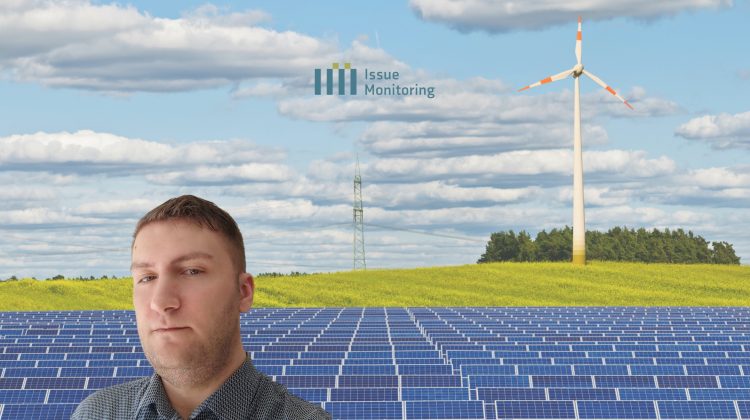Romania is once again at the center of the European scene with the announcement of its second CfD auction, scheduled for the third quarter of 2025. This round will allocate 2,000 MW for onshore wind energy and 1,472 MW for solar photovoltaic, consolidating the government’s commitment to a more robust and diversified renewable energy mix. The sector is eagerly awaiting the auction, particularly with regard to prices, competitiveness, and participation levels.
“The reduction in maximum prices seeks to maintain competitiveness and attract sustainable investment,” said Eusebiu-Valentin Stamate, Policy Analyst at Issue Monitoring, in an interview with Strategic Energy Europe. The new caps are set at €80/MWh for wind, up from €82/MWh in the first auction, and €73/MWh for solar, up from €78/MWh in the previous auction. These adjustments reflect market developments and technological maturity.
“This price adjustment seeks to maintain competitive prices while attracting investment in renewable energy,” Stamate points out.
Analysis of the first auction in view of the next one
The experience of the first CfD auction, held in December 2024, provided key lessons. On that occasion, 1,528 MW were awarded, with 1,096 MW for wind and 432 MW for solar, reaching average prices of €65/MWh for wind and €51/MWh for solar, well below the established maximum prices.
“The success of the first auction demonstrated the maturity of the wind sector and the growing attractiveness of solar projects in Romania,” the specialist adds. Strong demand, especially for wind energy, motivated the government to increase the allocation for this technology in the second round
The specialist assures that prices in the second CfD round are likely to be very competitive and slightly lower than those of the first due to the lower ceiling and the increasing profitability of the technologies. “The nature of the first auction, with prices well below the ceilings, demonstrates that Romania can expect to return to competitive prices, which will ensure good value for money and continued investor interest,” he emphasizes.
Wind power as a pillar of the energy transition
The change in capacity allocation confirms a renewable strategy focused on the country’s wind potential, particularly in areas such as the Black Sea coast. “Wind energy is seen as the cornerstone of Romania’s renewable future,” emphasizes Stamate, highlighting that the adjustment from 1,500 MW to 2,000 MW for wind power responds to the market’s dynamism.
Although solar power slightly reduces its share compared to the initial plans, the government remains committed to balanced growth. The allocation of 1,472 MW ensures that this technology remains a key player in energy diversification.
National and international investors are attentive to the Romanian market
The attractiveness of the Romanian market is growing thanks to a stable regulatory framework, the CfD mechanism, which provides financial predictability, and the results of the latest auction. “We expect strong participation from both national and international investors, especially from countries with experience in renewable energy such as Germany and Denmark,” says Stamate. The combination of competitive prices, a stable regulatory framework, increased capacity, and institutional support makes this second auction a strategic opportunity for new entrants in the sector.
“While no new entrants have yet been publicly confirmed, the positive market dynamics and Romania’s commitment to the energy transition make this second auction an excellent opportunity for both established and new investors looking to contribute to Romania’s growing renewable energy sector,” the Issue Monitoring representative said.
Regulatory Challenges on the Horizon
Despite the favorable context, certain risks remain that could impact investor confidence. Stamate warns that the removal of electricity price caps in 2025 and gas price caps in 2026 could generate uncertainty about the long-term profitability of projects.
“Investors may be cautious if there is insufficient clarity on how these price changes will affect the long-term profitability of renewable projects,” he notes.
Furthermore, potential changes to European Union state aid rules are a factor to monitor closely. Although the European Commission’s approval of the CfD scheme provides support, any changes could alter the outlook.
Beyond CfD: The Future of the Renewable Sector in Romania
To strengthen the sustainability of renewable growth, Stamate emphasizes the need to promote complementary technologies. “It is essential to accelerate the development of energy storage solutions,” he says, noting that these infrastructures will make it possible to manage the intermittency of renewable sources.
He also highlights the potential of green hydrogen as a key vehicle for decarbonizing hard-to-electrify sectors such as heavy industry, transportation, and heating. “A national hydrogen strategy would position Romania at the forefront of the energy transition,” he maintains.
A commitment to R&D and regional cooperation is another pillar that could consolidate Romania’s position as a leader in the European energy market. “This would help local companies remain competitive and attract international collaborations in the renewable energy sector,” Stamate analyzes.
“Stability in energy policy is also crucial. The government should prioritize long-term policy planning that is transparent and predictable,” he adds.
With a strategic vision that combines competitiveness, technological growth, and diversification, Romania will position itself for its second CfD auction with the challenge of consolidating its position in the renewable energy sector, while navigating regulatory risks and promoting a more resilient and sustainable energy ecosystem.































